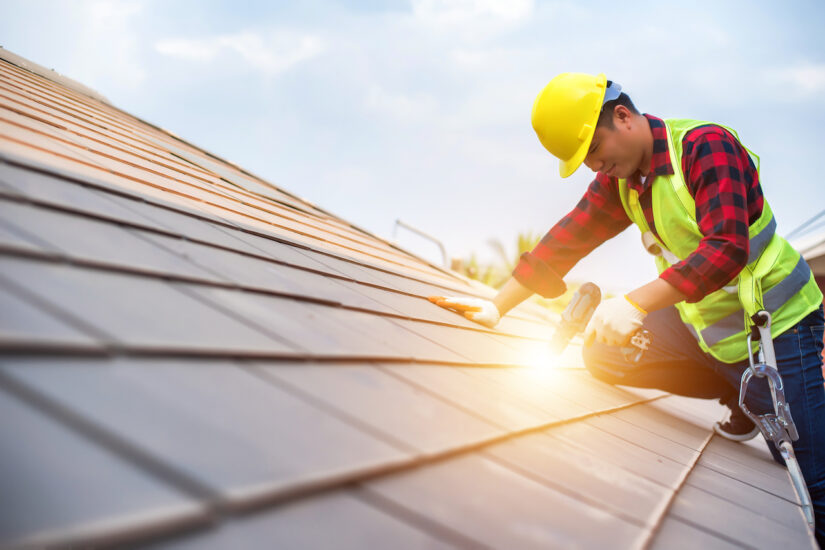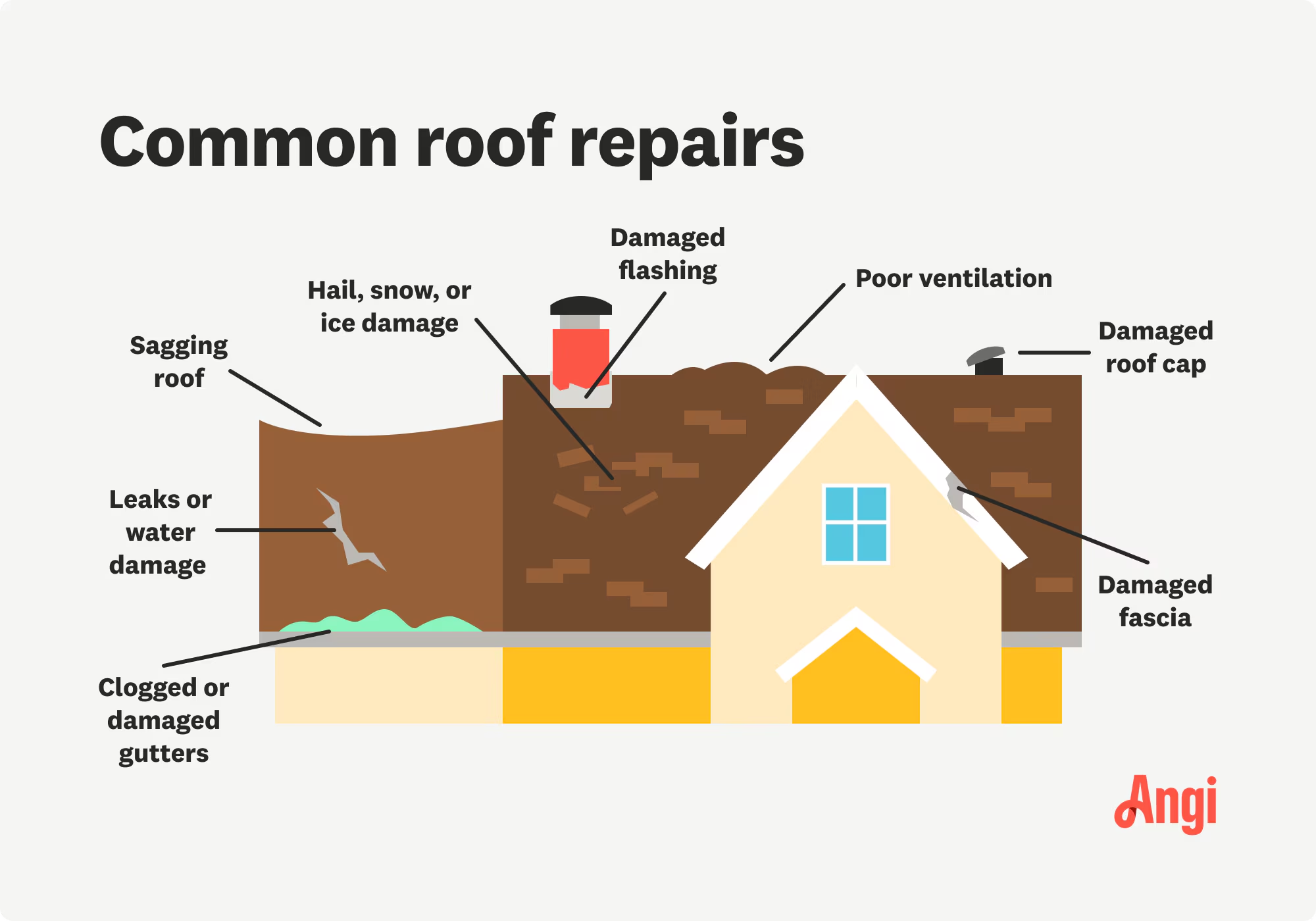Roof Repair Oahu: Quick and Affordable Roof Takes Care Of Near You
Recognizing the Different Kinds of Roofs: A Comprehensive Overview for Homeowners
In the world of homeownership, choosing the appropriate roofing style is a decision that lugs significant implications for both capability and aesthetic appeal. With a variety of options-- varying from the traditional gable to the contemporary flat-- each type presents distinct advantages and challenges that ought to align with the house owner's ecological considerations and certain demands. Recognizing these distinctions not just aids in making an educated option however likewise influences long-lasting maintenance and energy performance. As we explore the details of numerous roof covering types, it ends up being obvious that one size does not fit all; the best option may surprise you.
Saddleback Roof
Saddleback roofs, defined by their triangular shape, are amongst the most prominent roof covering styles as a result of their simplicity and performance in dropping water and snow. This design includes 2 sloping sides that meet at a ridge, enabling reliable drain and minimizing the danger of water buildup. The steep pitch frequently related to saddleback roofs boosts their ability to deal with hefty precipitation, making them appropriate for numerous climates.
Along with their functional benefits, saddleback roofs provide visual flexibility. They can be adapted to various architectural styles, from standard to modern-day homes. The layout can additionally accommodate added functions such as dormer home windows, which boost natural light and ventilation in the attic room area.
In addition, saddleback roofs offer adequate room for insulation, adding to power efficiency. Home owners can choose from a variety of roof materials, including asphalt shingles, metal, and tiles, even more enhancing personalization choices.
Regardless of their advantages, gable roof coverings might need added assistance in locations prone to high winds or heavy snowfall. In general, the gable roofing remains a preferred selection because of its blend of functionality, longevity, and aesthetic allure.
Apartment Roofs
Flat roofing systems are commonly acknowledged for their minimalist design and practical applications, specifically in industrial and commercial setups (oahu roofing). These roofings include a nearly straight or straight surface area, which allows for easy building and construction and flexible space usage. While they may do not have the aesthetic appeal of pitched roof coverings, level roofings provide countless benefits, especially in city settings where taking full advantage of space is critical
One of the key advantages of flat roof coverings is their availability. Homeowners can make use of the roofing system space for numerous purposes, such as roof gardens, balconies, or solar panel installments. Additionally, flat roof coverings are typically much more cost-effective to set up and maintain contrasted to their sloped counterparts, as they need less materials and labor.
However, level roofs do present particular challenges. Appropriate drainage is important to prevent water merging, which can result in leakages and architectural damage. For this reason, picking top notch waterproofing materials and normal evaluations are essential for ensuring durability. Usual products utilized for flat roof coverings consist of built-up roofing (BUR), changed bitumen, and single-ply membrane layers, each offering unique advantages. In general, level roofings work as a adaptable and functional option for lots of house owners and businesses alike.
Hip Roofings
Hip roofings are defined by their sloped sides that assemble at the top, developing a ridge. This layout stands out from gable roof coverings, as all 4 sides of a hip roofing incline downwards towards the wall surfaces, offering a more stable framework. The angle of the inclines can differ, enabling for flexibility in architectural aesthetic appeals and capability.
One of the primary benefits of hip roofing systems is their ability to withstand hefty winds and negative climate condition. The sloped surfaces enable far better water drain, minimizing the risk of leakages and water damage. In addition, hip roofings provide increased attic room space, which can be made use of for storage space or also exchanged habitable areas.
Nonetheless, building a hip roofing system can be more complicated and costly than less complex roofing system kinds, such as gable roofing systems. The added material and labor associated with developing the slopes and making certain appropriate architectural integrity can result in greater expenditures. Despite these downsides, many home owners favor hip roofings for their durability, visual charm, and potential for energy performance.
Mansard Roofings
Mansard roofing systems, often identified by their one-of-a-kind four-sided design, function 2 inclines on each side, with the lower incline being steeper than the top. This building style, stemming from France in the 17th century, is not only aesthetically enticing but practical, as it makes best use of the useful room in the top floors of a structure. The high reduced slope enables more clearance, making it a perfect option for loft spaces or attic rooms, which can be transformed right into living spaces.
Mansard roofing systems are identified by their flexibility, fitting numerous building designs, from conventional to contemporary. They can be created with various products, consisting of asphalt tiles, slate, or steel, giving homeowners with a variety of options to suit their spending plans and choices. In addition, the layout permits the integration of dormer home windows, enhancing natural light and ventilation in the upper levels.
Nonetheless, it is crucial to take into consideration the potential disadvantages. Mansard roofings may require more upkeep because of the intricacy of their style, and their steep slopes can be testing for snow and rainfall overflow. Generally, mansard roofing systems integrate elegance with usefulness, making them a preferred selection amongst property owners seeking distinct building functions.
Shed Roofing Systems
As property owners increasingly look for simpleness and performance in their architectural styles, dropped roof coverings have become a preferred choice. Defined by a single sloping plane, a shed roofing system provides a minimal aesthetic that enhances different home designs, from contemporary to rustic.
One of the main benefits of a shed roofing is its simple building and construction, which commonly converts to lower labor and product prices. This design enables effective water drain, reducing the threat of leakages and water damages. Additionally, the vertical incline provides sufficient room for skylights, enhancing natural light within the inside.
Lost roofings also use flexibility in regards to usage. They can be efficiently integrated into enhancements, garages, or find this exterior frameworks like pavilions and sheds. Furthermore, this roof covering style can accommodate different roof products, consisting of steel, asphalt shingles, or perhaps eco-friendly roofs, lining up with environmentally friendly campaigns.
Nonetheless, it is necessary to consider local climate conditions, as heavy snow tons might demand changes to the roof's angle or framework. Overall, shed roofing systems present a useful and aesthetically pleasing alternative for homeowners looking to make best use of capability without jeopardizing design.
Verdict


Gable roof coverings, defined by their triangular form, are amongst the most popular roof designs due to their simplicity and efficiency in losing water and snow. oahu roofing. The steep pitch commonly connected with gable roof coverings enhances their ability to manage heavy precipitation, making them appropriate for numerous environments
While they may lack the visual allure of pitched roofs, flat roofings use numerous advantages, these details specifically in urban environments where maximizing space is important.
